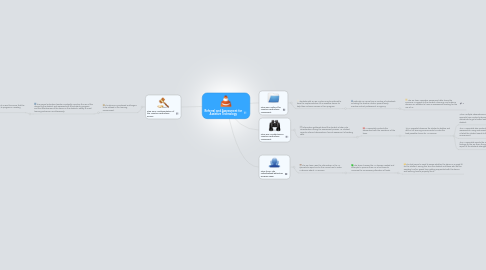
1. Step Four: Implementation of the Assistive Technology Device
1.1. The device is purchased and begins to be utilized in the learning environment.
1.1.1. The special education teacher constantly monitors the use of the device by the student and assesses both the student's progress and the effectiveness of the device in the student's ability to meet learning outcomes, simultaneously.
1.1.1.1. Ongoing assessment is used to ensure that the students is continuing to progress in meeting their learning goals.
2. Step One: Referral for Assistive Technology Assessment
2.1. Students with an IEP in place may be referred to have the implementation of an assistive device to help them achieve success in their program.
2.1.1. Referrals can come from a number of individuals including the teacher, doctor, parent/family member, school professional, or agency.
2.1.1.1. The IEP team considers assessment data, hears the concerns in regards to the student's learning, and makes a decision on whether to have an assessment meeting for the use of AT.
3. Step Two: Conducting an Assistive Technology Assessment
3.1. Information gathered about the student is taken into consideration during the assessment process. i.e: student records, informal observations, formal assessment of existing skills.
3.1.1. AT specialist conducts the assessment with the assistance of the team.
3.1.1.1. AT specialist observes the student's abilities and skills in all learning environments to make the best possible choice for AT services.
3.1.1.1.1. When multiple observations are not possible the AT specialist can conduct interviews with pertinent individuals to get a better look into the needs of the student.
3.1.1.1.2. The AT specialist also conducts formal assessments, using instruments, to get a better idea of what the student needs to thrive in the learning environment.
3.1.1.1.3. The AT specialist reports the assessment findings to the IEP team through a formal written report of the students strengths and needs.
4. Step Three: The Individualized Education Program Team
4.1. The IEP team uses the information in the AT specialist's report and in the current IEP to make a decision about AT services.
4.1.1. The team chooses the AT devices needed and attempts to procure them on a trial basis to minimize the unnecessary allocation of funds.
4.1.1.1. The trial period is used to assess whether the device is a good fit for the student. During this time the student and those who will be assisting him/her spend time getting acquainted with the device and learning how to properly use it.
